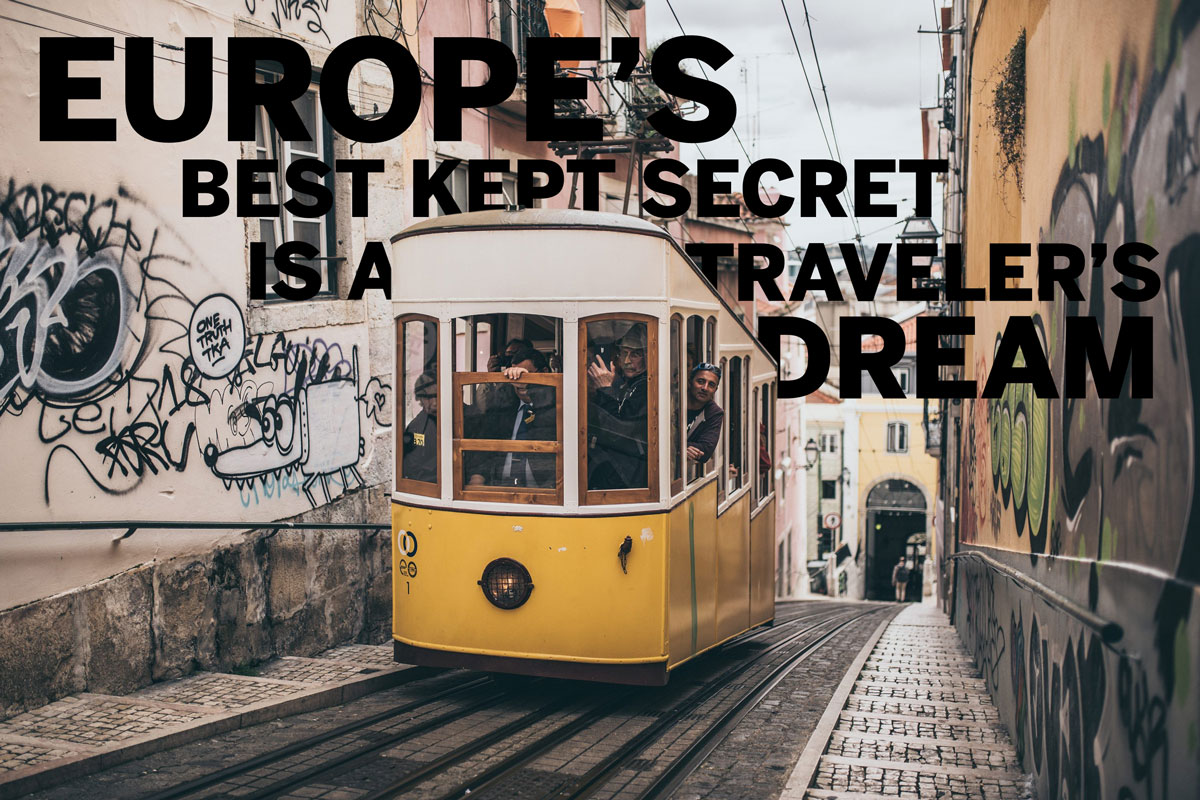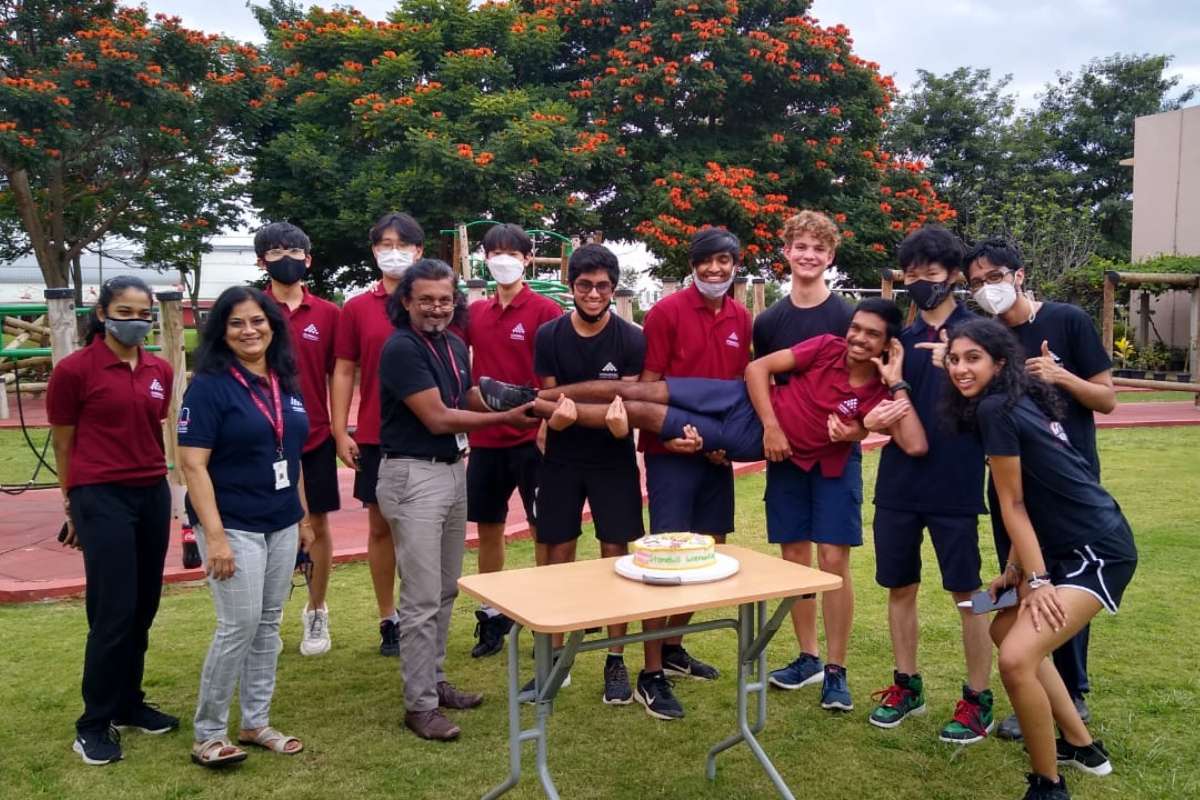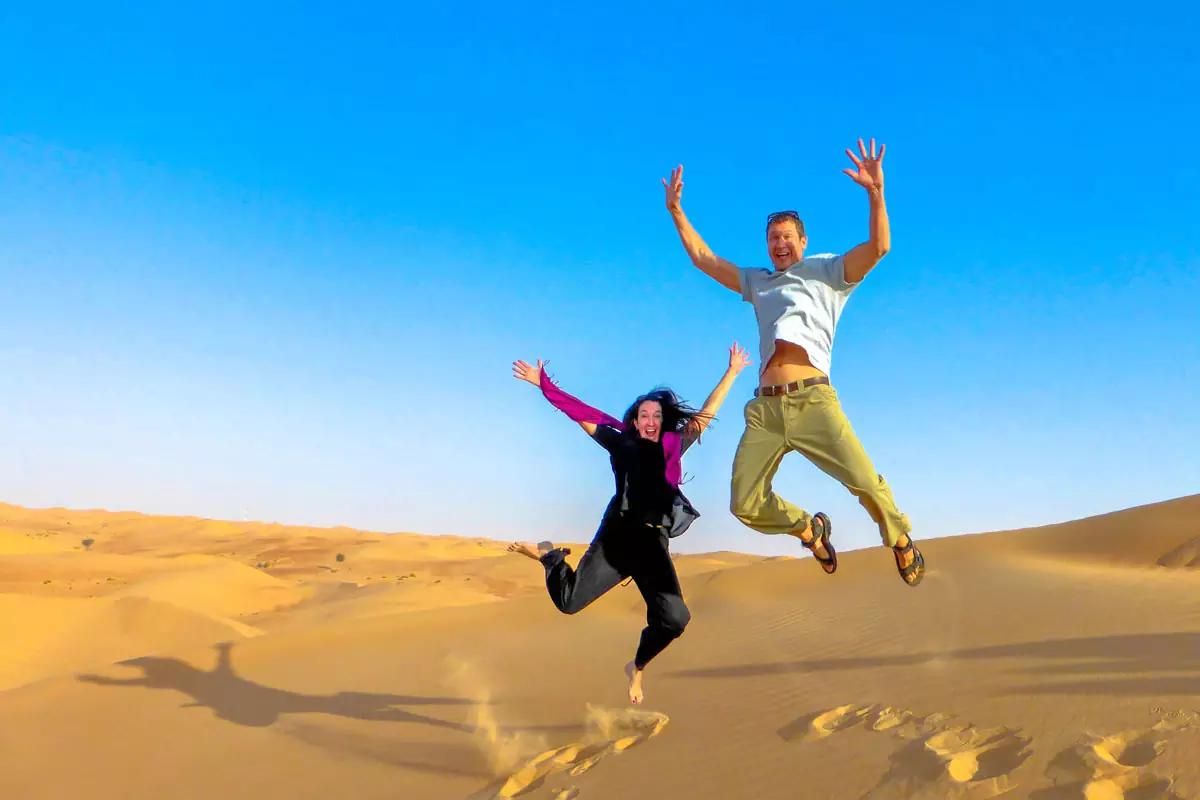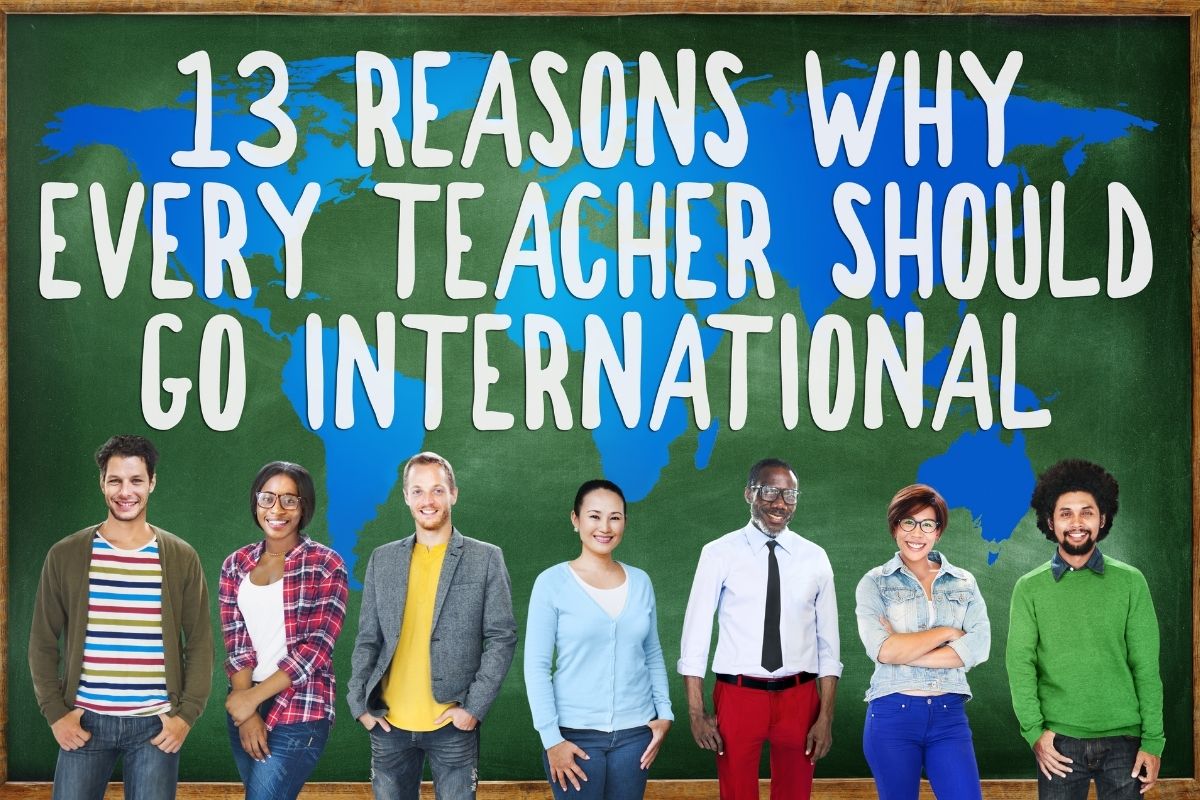¡Bienvenidos Bogotá!
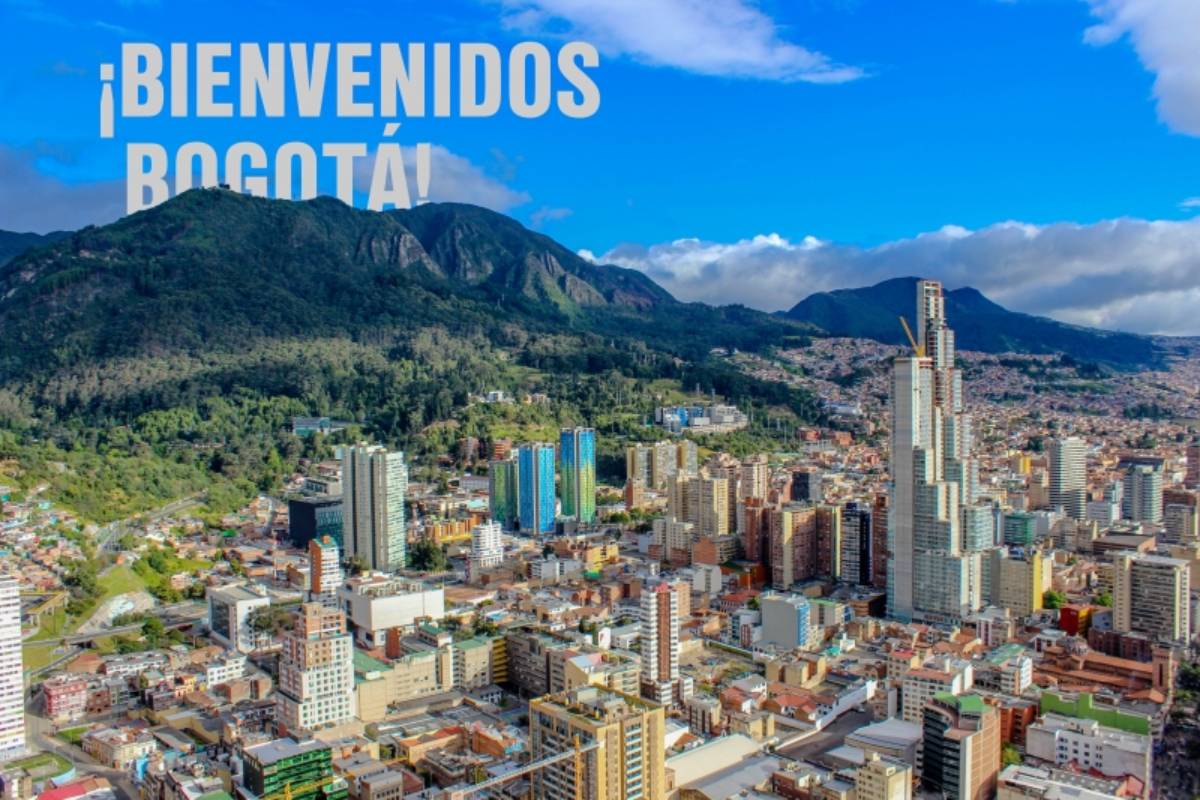
In recent years, Colombia has steadily built a reputation as an international travel destination. Since 2006, tourism to the country has increased by over 300% to over 3.2 million foreign visitors in 2017 (Colombia Reports, 2018). With a diversity of activities ranging from coffee tours, sun-swept beaches, rainforest exploration, Spanish classes, and festivals, there is no shortage of activities and experiences for a full cultural immersion of this Latin American gem.
When tourists plan a trip to Colombia, most typically focus on either the Caribbean regions of Cartagena, Santa Marta, or San Andres in the search of sun, surf, and general relaxation. Other visitors are drawn to the Eje Cafetero, or coffee region, where temperate weather, thermal pools, and finca tours are the norm. Festivals such as Novembrinas in Cartagena, La Feria de Cali, Carnival de Barranquilla, La Feria de Manizales, and Festival Vallenato bring large swaths of visitors to join the holiday mood with locals for a rich and full cultural experience.
Although airports in Barranquilla, Medellin, Cali, and Cartagena service international flights, the majority of international tourists typically arrive to the country through the country’s capital, Bogotá. However, most passengers typically only spend several days in Bogotá, electing to quickly use Bogotá as simply a transportation hub to get to their final destination. With a population of eight million within the municipality and 11 million in the metro area (World Population Review, 2018), Bogotá offers a multitude of experiences and destinations that are often overlooked by travelers. Here, we highlight some of our favorite and most notable places to experience as well as some important facts for those considering a longer stay in Bogotá.
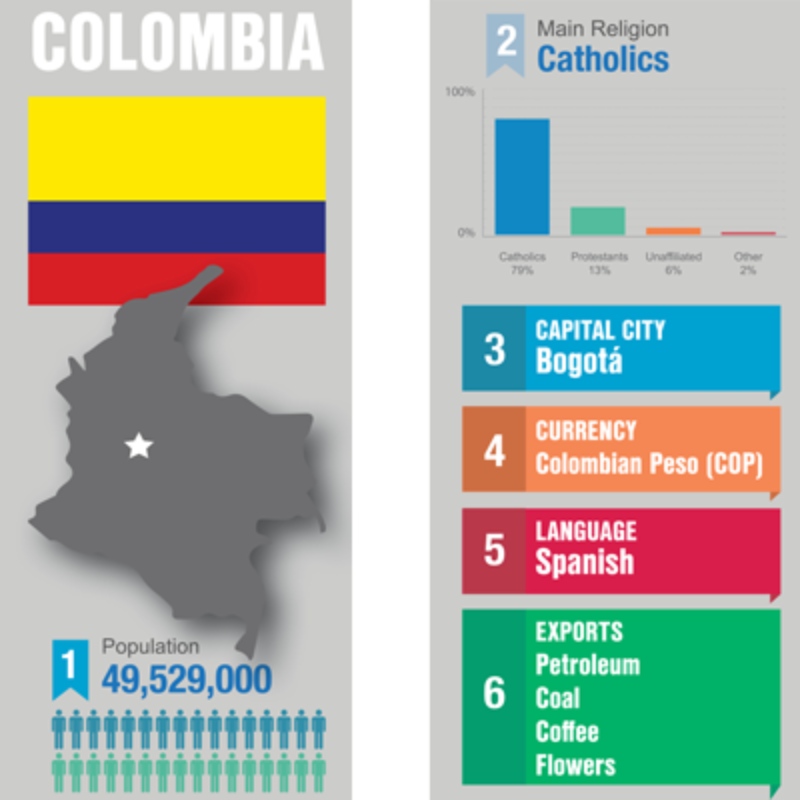
Getting To and From Bogotá
Most international airlines offer service to Bogotá from major airports around the world. Direct flights from cities such as Frankfurt, London, Madrid, Miami, New York, Mexico City, Houston, and Los Angeles make Bogotá an ideal hub and destination for travelers entering or exiting Colombia.
Air travel within Colombia is quick, cheap, and easy. From Bogotá, flights can typically be found on airlines such as Avianca, LATAM, VivaColombia, and others for anywhere between $80-120 USD round trip. Flight times are generally between 45-70 minutes, making Bogotá the perfect base for a weekend getaway from the buzz of the big city. For more adventurous travelers, each city typically has a bus terminal and tickets can be purchased on charter buses to other cities. Although travel times are long and roads are not always in the best condition, traveling around the country by land can be a great opportunity to see the Colombian landscape and really get to know the countryside well.
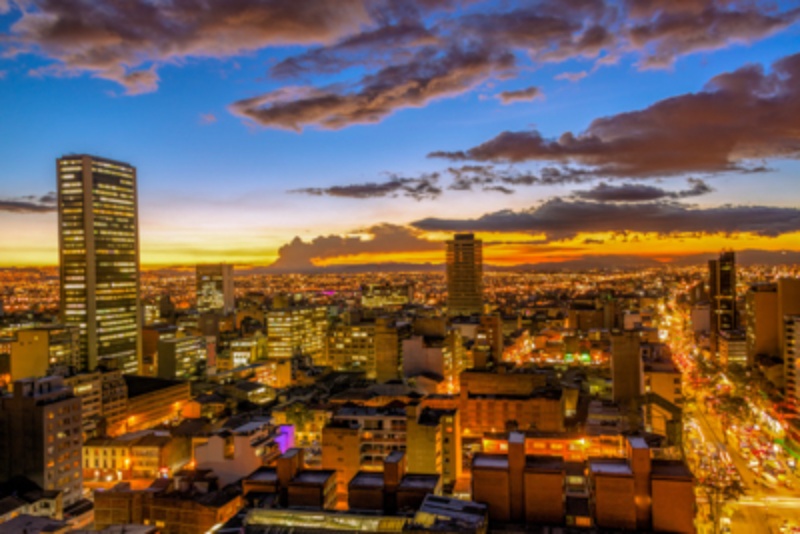
Getting Around Bogotá
Almost anywhere you go, you’ll see yellow taxis around that you can flag down. It’s recommended that you always ensure that the taxi driver uses the meter and that you take a picture of the taxi information (driver name, license plate) located on the backside of the passenger seat and send it to a friend or colleague. Although the safety of Bogotá has improved tremendously, security problems still persist, and it’s always helpful to document your taxi information.
Another option that many travelers use is Uber. If you already have the app configured from back home, using Uber in Colombia should be seamless and provides immediate security as the taxi driver and car information are automatically stored in the app. A word of caution, though: Although plenty of people use Uber in Colombia, it is technically illegal and the driver will probably ask you to sit in the front seat and tell police that you are “amigos” if stopped.
Mass transit options in Colombia are quite unorganized, and if you muscle the bravery to ride on one of the TransMilenio or other buses throughout the city, be prepared for crowded conditions and bumpy roads. In particular, be sure you keep a close eye on your belongings, as pickpockets have been known to work on these buses, taking advantage of crowded conditions and general disorder. Traffic in Bogotá has been rated as the most congested in all of South America and fifth in the world (The City Paper Bogotá, 2018). Despite improvements in mass transit, road repairs, and initiatives such as Pico y Placa (where certain cars are restricted from driving during specified hours to relieve congestion), traffic in Bogotá can be an absolute nightmare and frustration. If possible, try to plan your city transportation during non-peak hours or check a driving app such as Waze or Google Maps to ensure you understand the traffic situation beforehand.
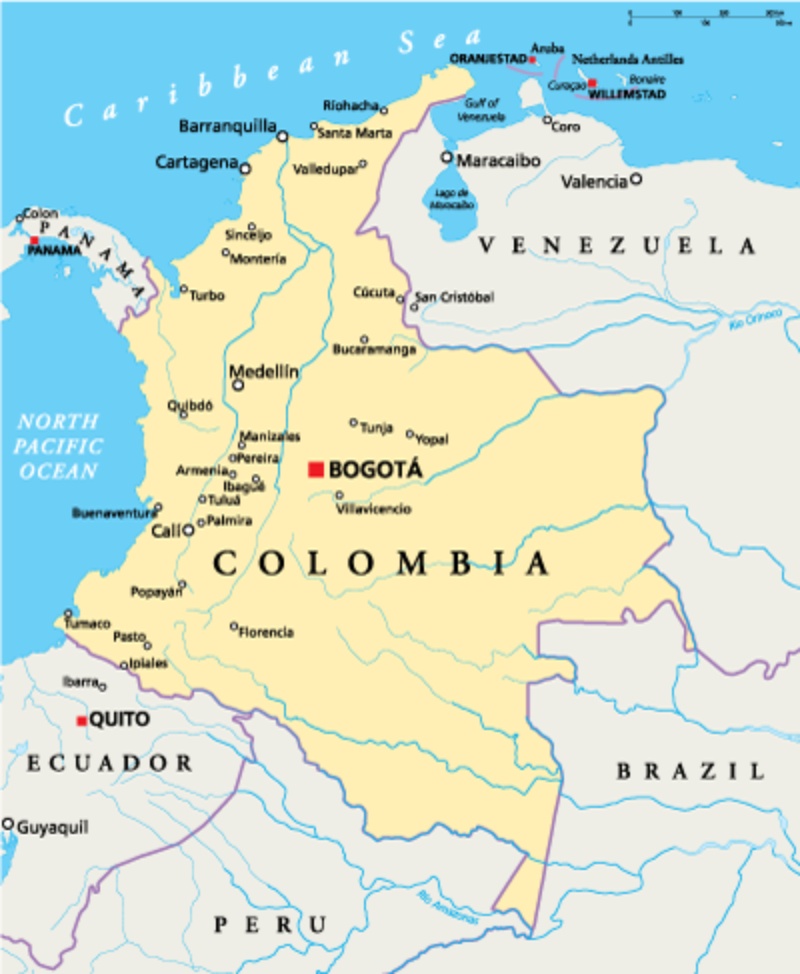
Destinations
In a city as large as Bogotá, a list of destinations and places to visit would be expansive and difficult to formulate into a comprehensive list. As such, we’ve taken some of our favorites spots and listed them here.
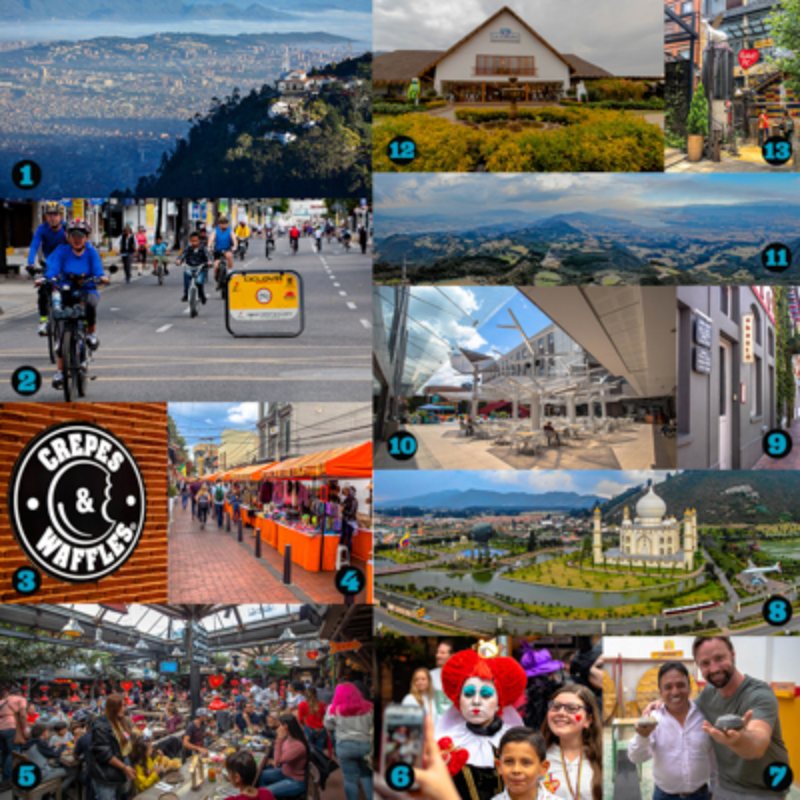
1. Monserrate (Carrera 2 Este No. 21-48 Paseo Bolívar, Bogotá) Mount Monserrate is a great way to spend the day. A round trip to the top via a cable car will cost $21.000 pesos (approximately $7.00 USD), or adventurous souls can walk to the top on a paved trail that will take anywhere between two to three hours. The views of the city from the top are amazing. There are restaurants and a classic Catholic church at the highest point. On Sundays, the price is cut in half, which means the crowds are double.
2. Ciclovía (Various Locations) Every Sunday and on holidays, approximately 76 miles of streets are closed to traffic from 7 A.M. to 2 P.M. for the Ciclovía, a program the local government has run since 1974. Some two million people, one quarter of the city’s population, head out for the Ciclovía every week to cycle, run, and walk (Instituto Distrital de Recreación y Deporte, 2019). This program has been so successful that many other countries have started to follow suit. But remember, Bogotá did it first.
3. Crepes & Waffles (Cra. 12a #83- 40, Bogotá) No Colombian experience is complete without a visit to Crepes and Waffles, which is almost as ubiquitous in Colombia as Starbucks in the United States. The restaurant is famously staffed with single mothers, a nod to their social mission, and offers a variety of crepes and desserts at affordable prices. Although we’ve listed the location in Zona T, you’ll find a Crepes & Waffles in nearly every single shop- ping center throughout the city.
4. Usaquén Market (Cra. 6a #119B-05, Bogotá) Every Sunday the streets of Usaquén close to traffic and local artisanal vendors line the streets to sell crafts, artwork, toys, and more. In addition to vendors, lively street performers are scattered throughout the area, making for a nice leisurely stroll.
5/6. Andres Chía (Calle 3 #11A-56, Chía) Andres Chía was actually the first of many Andres Carne de Res locations, including Andres D.C. Located in Chía, a small suburb north of Bogotá, the location is full of colorful knick-knacks and wacky, surreal souvenirs that line the walls from floor to ceiling. It has a Carnival-like atmosphere and offers a wide range of activities for families including magic shows, a climbing wall, cookie-making and much more. Choosing a dish here can be a lengthy process as the menu is 78 pages long and features a wide range of delicious BBQ spreads.
7. Parque Jaime Duque (Autopista norte km 34, Sopó) Created in 1983 by a former Avianca pilot, Parque Jaime Duque is a family theme park with amusement rides, restaurants, and museums. This is a great experience for all ages and an excellent day trip idea.
8. La Cabaña Alpina (Carrera 4 Zona Industrial, Sopó) Alpina, one of the largest producers of dairy products in the country, has a beautiful cabin where they sell their products and offer a great family experience. Although it’s a little outside the city, this makes for a great weekend activity with picturesque mountains nearby and fresh air.
9. Parque Ecologico Pionono (Vía Pionono, Guasca) If you’re looking for a reprieve from the concrete jungle of Bogotá, check out Parque Ecologico Pionono. It’s about an hour north of Bogotá and offers a great hiking trail and panoramic views. At only $5.500 pesos to enter the park (about $1.83 USD) or $27.600 pesos to camp overnight (about $9.20 USD), this is a great getaway day or overnight excursion to reconnect with nature.
10. BOHO Market (Cra. 7 #120-20, Bogotá) A trendy, all-in-one destination with an organic food market, restaurant, dessert shops, and a fashion expo with clothes, watches, decorations and more. The main building has four floors for exploration, an outdoor seating area, and expo in the back.
11. Abasto Restaurant (Carrera 6 #119B-52, Bogotá) Located in the trendy neighborhood of Usaquén, Abasto is an ideal brunch spot that serves delicious dishes such as roast beef sandwiches and fresh juices. Try heading over on a Sunday, where you’ll be able to visit the Usaquén artisanal market afterwards. There is another restaurant location in Quinta Camacho.
12. Andres D.C. (Cl. 82 #12- 21, Bogotá) Located in the trendy Zona T with restaurants and bars galore, Andres D.C. has perhaps the most prestigious reputation as the nightclub of choice. With multiple levels representing different themes, be prepared to put on your dancing shoes and party late into the night.
13. Club De Tejo San Miguel (Cra. 26 #78- 20, Bogotá) The game of Tejo is a popular game among the working class of Colombia that can be played by anywhere from two to ten players at a time. The idea is to score 21 points before your opponent. Points are scored by throwing a 1.5 pound steel puck 40 feet towards a slanted piece of clay with steel ring known as the bocín. The bocín is lined with four firecrackers placed at 12 o’clock, 3 o’clock, 6 o’clock and 9 o’clock that create a loud pop and spark when hit. Each team throws one puck per round. For a throw to be valid, the puck must fall directly on the targets, without having contact with external elements such as the floor, boards, edges of the court or other locations.
Living in Bogotá
If you’re thinking about spending more time in Bogotá as opposed to simply passing through for vacation, the first thing you’ll want to get a handle on is the cost of living. Expatriates typically live in the neighborhoods of Cedritos, Parque 93, or Usaquén. A two bedroom, two bathroom apartment will cost approximately 2.5 million pesos per month (approximately $833 USD). Domestic help in terms of nannies or cleaners is relatively inexpensive, with the going rate anywhere between $40.000 – $60.000 pesos ($13.33 – $20.00 USD) for a full day of work. Be careful that any domestic help you allow in your house is properly vetted; the best way is to ask any Colombian friends or contacts for references.
To work in Colombia, you’ll need to make sure that you have a work permit or visa, which your employer should be able to apply for you on your behalf. Be wary if employers ask you to work under the table or to front the fees in advance for your visa costs. If you’re in Colombia on a tourist visa with an American passport, you’re limited to a total 180 days per year, independent of the number of trips you take.
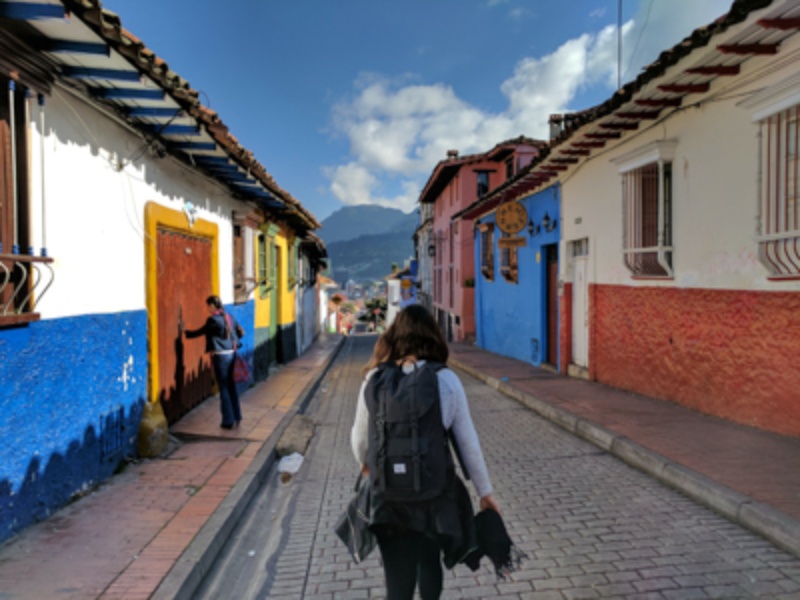
Schooling in Bogotá
The intersection of increased safety, multinational corporations, geographic desirability, and diplomatic offices has brought a steady wave of expatriate families to Bogotá. Additionally, Colombia is also beginning to see a greater number of host country students enroll in international schools, as upward economic mobility, a desire for English fluency, and aspirations to study in universities abroad has increased demand for quality schools.
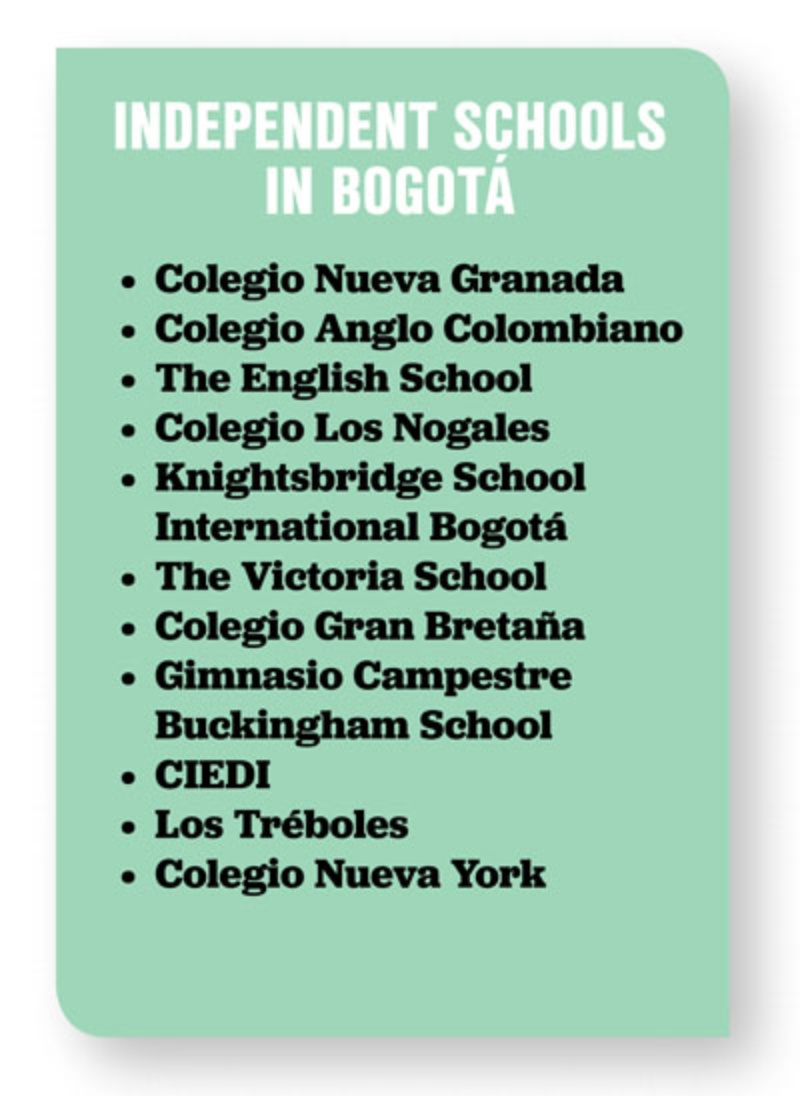
Finding a school to match your child’s needs can be challenging. Believe it or not, location is one of the key factors to take into consideration when selecting a school. Because Bogotá is a highly congested city, transportation to school can easily take over one hour each way, a critical consideration especially for families with younger children. Another factor to take into consideration are the demographics of both the faculty and the student body. While some families prefer access to expatriate teachers with native English ability, there are an increasing number of schools that employ Colombian teachers with a high level (but perhaps not fully native) level of English. Schools with expatriate teachers typically have higher tuition and enrollment costs, as these schools often pay for relocation and housing costs of their international staff. Student demographics is another important consideration for families. Schools with a higher host-country student population have greater student enrollment stability and greater exposure to Spanish versus more internationally-minded schools (as measured by nationality) with greater numbers of expatriate families. Schools with more host-country students tend to focus more on the Colombian national curriculum and the Colombian standardized exit exam used for national university admissions, as opposed to schools with more expatriate students focusing on examinations such as the International Baccalaureate (IB), Advanced Placement (AP), and the Scholastic Aptitude Test (SAT).
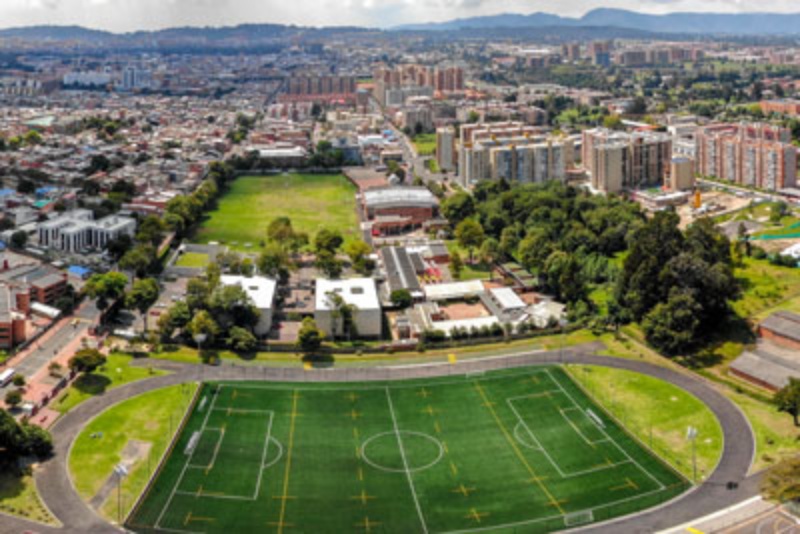
Bogotá often gets a reputation for being a busy, congested city that is best served as a transportation hub or for economic and business purposes. However, once you get to know the people and the variety of different places to visit, we’re sure you’ll begin to see Bogotá as a vibrant, diverse, and culturally significant destination.
¡VEN Y CONOCE A BOGOTÁ!
This article is available and can be accessed in Spanish here.
Colombia Reports. (2018). Tourism. Retrieved from http://data.colombiareports.com/colombia-tourism-statistics/.
World Population Review. (2019). Colombia Population 2019. Retrieved from http://worldpopulationreview.com/countries/colombia-population/.
The City Paper Bogotá. (2018). Bogotá ranks among world’s most traffic congested cities, says study. Retrieved from https://thecitypaperbogota.com/bogota/bogota-ranks-among- worlds-most-traffic-congested-cities-says- study/19054.
Instituto Distrital de Recreación. (2019). Ciclovía Bogotana. Retrieved from https://www.idrd.gov.co/ciclovia-bogotana.


